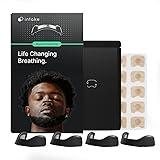Embrace Tranquility: Your Guide to Yoga for Better Sleep and Stress Relief
In today’s fast-paced world, finding truly restorative sleep often feels like an elusive quest. Many individuals grapple with the cumulative effects of daily stress and anxiety, which frequently manifest as restless nights and fragmented sleep. The accompanying video offers a gentle yet effective bedtime yoga practice, specifically designed to help de-stress the mind and body, paving the way for significantly improved sleep quality and a more peaceful state of being. This complementary guide will delve deeper into the science and practice of yoga as a powerful tool for achieving deep relaxation and promoting restorative slumber.
The journey towards better sleep often begins with understanding the profound connection between our mental state and physical well-being. Chronic stress elevates cortisol levels, activates the sympathetic nervous system (our “fight or flight” response), and can make it challenging to transition into a calm, sleep-ready state. Yoga, particularly the gentle, restorative styles demonstrated in the video, actively works to counteract these effects by engaging the parasympathetic nervous system, responsible for “rest and digest,” thus easing the body and mind into a state conducive to sleep.
Cultivating Calm: The Power of Mindful Breathing
A cornerstone of any effective bedtime yoga practice is the emphasis on conscious, deep breathing, often referred to as pranayama. The video guides participants through several rounds of profound inhales and exhales, which is a simple yet incredibly powerful technique for calming the nervous system. When focus is placed on the breath, the mind is naturally drawn away from racing thoughts and daily anxieties, fostering a sense of immediate tranquility. This deliberate regulation of breath has a direct physiological impact, lowering heart rate and blood pressure, signaling to the body that it is time to relax.
Engaging in slow, deep breathing before sleep helps to quiet the incessant chatter of the mind that so often prevents restful slumber. By consciously extending each inhale and exhale, oxygenation of the blood is improved, and a sense of centeredness is gradually established. This preparatory phase effectively prepares the body’s internal systems for the deep rest that is sought. Regularly practicing this type of breathwork can significantly enhance overall sleep architecture, allowing for deeper and more uninterrupted sleep cycles.
Gentle Stretches for Releasing Daily Tension
Throughout the day, tension can accumulate in various muscle groups, from the neck and shoulders to the hips and lower back. This muscular tightness can contribute to discomfort and restlessness when attempting to fall asleep. The yoga sequence in the video systematically addresses these common areas of stiffness through a series of gentle stretches and movements. These aren’t strenuous exercises; instead, they are designed to encourage release and elongation, rather than building strength or flexibility.
Focusing on gentle mobility, such as soft ankle and wrist rotations, helps to improve circulation in the extremities, often overlooked areas where subtle tension can reside. The carefully guided neck stretches are particularly beneficial, as many individuals carry significant stress in their upper shoulders and cervical spine. These actions are intended to create space and ease within the body, preparing it for a completely relaxed state. It is the cumulative effect of these small releases that contributes greatly to a feeling of deep physical calm before rest.
Key Poses for a Restful Night’s Sleep
The accompanying video demonstrates a thoughtful selection of yoga poses, each contributing to the overall goal of enhanced relaxation and sleep. Understanding the specific benefits of each pose can deepen the practice and reinforce its effectiveness for de-stressing and promoting quality sleep.
Easing into Relaxation: Seated Poses and Spinal Twists
Beginning in a comfortable seated position allows for grounding and internal focus. Gentle neck stretches, often performed with the aid of a hand to apply light pressure, serve to relieve stiffness that accumulates from prolonged sitting or stress. These targeted movements are intended to unravel the knots of tension that can often disrupt peaceful sleep. Spinal twists, performed carefully and without force, are known to gently decompress the vertebrae and release tension along the entire length of the spine. This can contribute to a feeling of lightness and freedom within the torso, a crucial element for comfortable rest.
Calming and Grounding: Child’s Pose and Puppy Pose
Moving from seated positions into more restorative shapes, Child’s Pose (Balasana) is universally recognized for its deeply calming and introspective qualities. The forehead is rested down, often onto a pillow for added comfort, which can soothe the nervous system and quiet the mind. Puppy Pose (Uttana Shishosana) offers a similar grounding effect while providing a gentle stretch for the spine and shoulders. These poses encourage surrender and release, allowing the weight of the day to be gently shed from the body and mind.
Gentle Back and Hip Release: Sphinx Pose and Happy Baby
The Sphinx Pose (Salamba Bhujangasana) is a mild backbend performed on the forearms, which can gently open the chest and stretch the abdominal muscles. This subtle opening promotes a sense of spaciousness, aiding in deeper breathing and releasing forward-folding tension that often builds up during the day. Later in the sequence, poses like Happy Baby (Ananda Balasana) are introduced. This pose is excellent for opening the hips and gently releasing the lower back, areas where considerable stress and stiffness can be stored. The rocking motion in Happy Baby can also provide a gentle, passive massage to the lower back, further enhancing relaxation.
Reversing and Releasing: Uttanpadasana and Shavasana
The practice of Uttanpadasana, or the double leg lift with ankle rotations, often serves as a gentle inversion, promoting circulation and helping to “reverse drain” accumulated fluid and tension from the legs and feet. This can be particularly soothing for individuals who spend much of their day standing or sitting. The ultimate release is found in Shavasana, or Corpse Pose, where the entire body is allowed to rest completely flat. This final resting pose is not merely lying down; it is an active practice of letting go, allowing the nervous system to fully integrate the benefits of the entire sequence. It is in this stillness that the body and mind truly prepare for deep, undisturbed sleep.
Establishing Your Bedtime Yoga Routine
To truly harness the benefits of yoga for better sleep, consistency is key. Integrating a gentle bedtime yoga practice into your nightly ritual can transform your evenings and significantly improve the quality of your rest. It is suggested that a dedicated space be created, even if it is just a clear area on your bed or floor, free from distractions. Dim lighting and a quiet environment will further enhance the calming atmosphere, signaling to your body that it is time to unwind.
A comfortable setup is essential for this gentle practice. As demonstrated in the video, having pillows readily available can make poses more accessible and restorative, allowing for deeper relaxation without strain. This thoughtful preparation contributes to a more holistic approach to sleep hygiene, where the focus extends beyond simply getting into bed, to actively preparing the mind and body for quality rest. The commitment to such an evening routine is often rewarded with more profound and rejuvenating sleep, helping to alleviate daily stress and anxiety effectively.
Embracing a gentle yoga practice each evening can become a powerful tool in your journey toward consistent, quality sleep. By consciously engaging in mindful breathing, releasing physical tension through gentle stretches, and allowing the body to deeply rest, a profound shift in sleep patterns can be experienced. This routine is designed to effectively de-stress the entire system, promoting anxiety relief and ultimately guiding you to a more peaceful and restorative night’s sleep.








